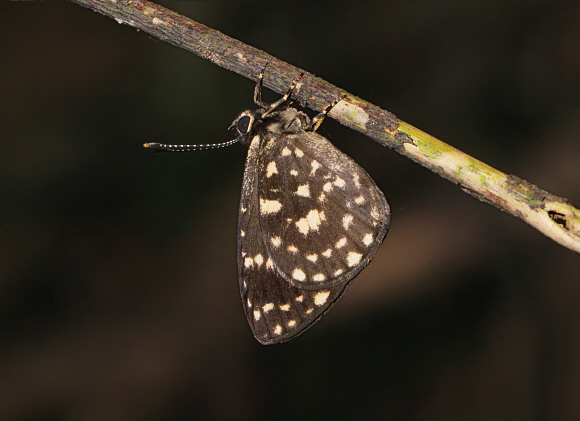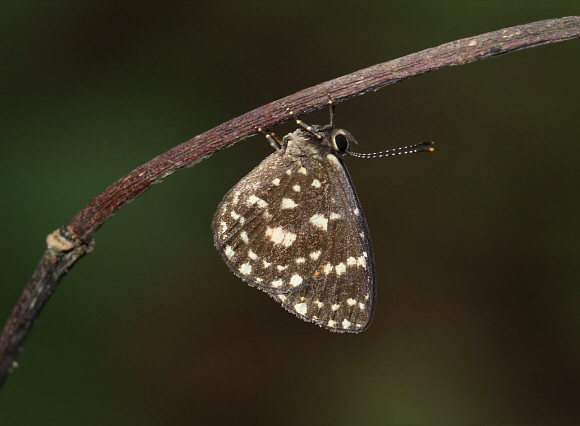
Introduction
The Lipteninae are wholly African in distribution, and comprise of about 600 species, varying from the tiny creamy yellow Liptena helena to the dazzling metallic blue Epitola posthumus – a species which with a wingspan of 65mm, is massive by Lycaenidae standards.
The Lipteninae are fascinating because of their association with “ant trees”, i.e. trees which support colonies of Crematogaster ants. As with most other Lycaenidae species, the caterpillars of Liptenids have ants in almost constant attendance. The ants “milk” a sugary substance from a gland on the caterpillar’s back, and in return for this reward the caterpillar benefits because the presence of the aggressive ants deters other insects such as wasps and flies that would otherwise attack them.
Liptena comprises of 65 species, all of similar size ( circa 35mm wingspan ), but varying in colour from pure white to yellow, orange or black. Some species such as xanthostola have only very feint markings. Others such as ferrymani are strongly patterned with dark wavy lines. A few including eukrinaria and similis are patterned with black spots on a pale ground colour; while in others such as helena and modesta there is a polka-dot pattern of creamy spots on a dark ground colour.
The first part of the popular name Red-spot False Dots refers to the upperside, which is dark brown, with a small central red spot on the hindwing of the male. The female has extensive areas of red or orange in the basal area of both wings.
Liptena helena is a west African species, found from Sierra Leone to Ghana.
Habitats
This species is found in good quality rainforest, at altitudes between about 100-600m.
Lifecycle
The larvae feed on algae growing on the bark of trees.
Adult behaviour
The butterflies behave similarly to most other small Liptenids – they spend long periods at rest, sitting at the tips of leaves or tendrils with their wings held erect. They roost overnight on dry twigs, close to the ground. Both sexes feed at extrafloral nectaries.

